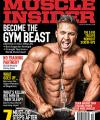The Romano Factor


HIT ME - High intensity training explained
High Intensity Training (HIT) is perhaps the most efficient means of building muscle because it addresses a very basic adaptational function of human physiology. Several studies have demonstrated that one set, to true muscle failure, is enough to stimulate the body’s response to weight-induced stress. “Failure” basically tells the body it’s not strong enough to endure; it needs more strength—muscle. This clear, clean logic was first fostered by Nautilus founder Arthur Jones in the early 1970s and later popularized by Mike Mentzer, the true aficionado of the “one-set theory.” Like Jones, Mentzer believed that if you brought a particular muscle to a point where it was momentarily unable to heed the brain’s command to contract, you have most efficiently signaled the body to grow. Because of how far it bucked convention—in an era when bodybuilders trained six to eight hours a day—just doing one set seemed nuts.
Hence, by the mid-1980s, the bodybuilding world was split into two camps: those who agreed with Mike Mentzer and those who did not. Members of the former group were decidedly scarce. This seemed odd considering the street cred Mike brought to the table. Not only was he a disciple of Arthur Jones’s HIT theory, tempered with the philosophical acumen of Ayn Rand, Mike Mentzer is the only bodybuilder in the history of the Mr. Universe to have ever scored a perfect 300. But, alas, he did not win the Olympia.
However, Mike’s Heavy Duty system—his version of HIT—was gaining notice, particularly by a guy named Dorian Yates, who adopted Mike’s philosophy on HIT training and became the first bodybuilder to win the Olympia north of 250 pounds. Then he got bigger and won five more times. He eventually had to retire because he had become so strong using HIT that he literally tore his body apart—he was actually able to generate more force than his muscle/connective tissues could handle and pulled himself apart. How cool is that? Apparently pretty. Disciples of HIT training have steadily risen over the years since Mentzer helped create the Yates physique and the logic behind it began to resonate. However, practitioners are still outnumbered by the rest.
What is HIT anyway?
"High-intensity anaerobic exercise is the imposition of the highest stimulus on a particular muscle, in the shortest period of time, until total muscular failure is reached." - John Cardillo, Canada's Premier Fitness Expert & Bodybuilder Champion
Quite simply, it is the polar opposite of what most people follow—High Volume Training (HVT). HIT training promotes the axiom that there are only two measures of output: zero or 100 percent. Anything in between would be completely arbitrary and illogical. HIT answers the one question relevant to every single exercise we perform: How many sets do I do? Now, Mentzer would say to me, “If I had a gun and I knew I could kill you with one perfectly placed round, which round would it be?” The third? The eighth? The fifth? The HVT guys have no idea. The HIT guys know it’s the first round. Anything else would be arbitrary, inhumane, counterproductive, and a waste of bullets. The same goes for stimulating the growth response. If one perfectly executed set—driven to a momentary interruption in the nerve path that delivers the brain’s impulse to contract, i.e., failure—is enough to stimulate the growth response, why would you do more? To do so would only be arbitrary, inhumane, counterproductive, and a waste of iron.
HIT training has a definitive exact point in the set where the exercise is logically over—momentary muscle failure. HVT has a casual smattering of rep ranges: 8–10, 10–12, 12–15, 20–25, 30, 50 … the ranges and variations are endless, but they have no established objective. They can’t; there isn’t one. What are you setting out to do? The HIT guy is setting out to fail. The HVT guy is setting out to complete an arbitrary number of reps. The question that begs to be asked is “Why?”
The goal of any exercise is maximum muscle fibre recruitment. In order to heavily influence the growth response, you have to give the body a reason it needs more strength. In essence, it has to perceive that it’s under an insurmountable stress. If it has gathered up all its muscle fibres in a specific muscle group, and generated 100 percent output and that maximal grouping of muscle fibres fails, the body will adapt to the stress by building more strength—muscle.
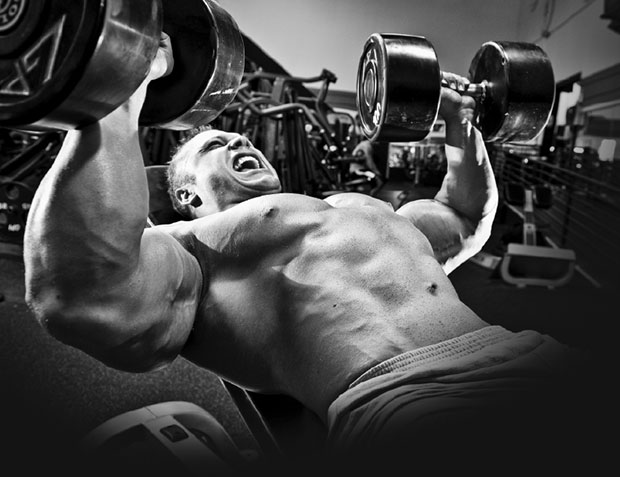
HIT most efficiently recruits maximal muscle fibres because the basic concept surrounding HIT is to work a muscle to failure. This is the surest way to get the body to agree it needs to grow. This is an important aspect of bodybuilding because every ounce of muscle you grow beyond what’s needed for just very basic movements runs completely against Mother Nature. The human body was designed to hoard fat and shed tissue that is metabolically active—tissues that require nutrients, or what we affectionately refer to as muscle. This is a survival mechanism. The body is always striving to preserve itself. By having lots of fat on hand and little tissue that requires nutrients, the human body is poised to survive even if the food supply dries up. In essence, our bodybuilding pursuits run completely against nature. God wanted us chubby and weak. But, because the body was built to survive, the adaptive response to prolonged gravitational stress is to build more muscle to adapt to the stress. Take away the stress—i.e., stop training—and your body sheds the muscle it perceives that it no longer needs. Return the stress—go back to the gym—and, with proper nutrients on board, the muscle will come back. Think of having your arm or leg in a cast. The immobility fosters atrophy. Take the cast off and start using the appendage as before and the muscle grows back. More or less.
Now, let’s go back to fibre recruitment. If the goal is maximal fibre recruitment, how do the volume guys recruit the amount of fibres the HIT guys do? Basically, they don’t. That’s not to say they can’t, but the path isn’t quite as clear, nor as efficient. If the stimulus response to build muscle is the momentary interruption of the nerve impulse to contract the muscle, then by generating enough intensity to cause the muscle to fail, you have recruited the maximum number of fibres available and proved to the body it’s not enough. That is the definitive surest way to get the body to grow. Why is this tougher for the volume guys? Look at it this way; let’s say your biceps muscle is composed of a bundle of 1,000 muscle fibres. When you lift your hand, with nothing in it, up toward your shoulder, there is no need to activate all 1,000 fibres to move almost no weight. Just a few muscle fibres are needed, let’s say 50. Now, grab a 35-pound dumbbell and curl that toward your shoulder. Clearly you’ll need more than 50 fibres to do the job. You might need 500. Now, keep curling the weight. As the 50 fibres tire out, and you continue to generate intensity, you may recruit more. Continue to curl that 35-pound dumbbell until you can’t possibly complete even a partial rep (failure) and you’ve probably recruited almost all 1,000.
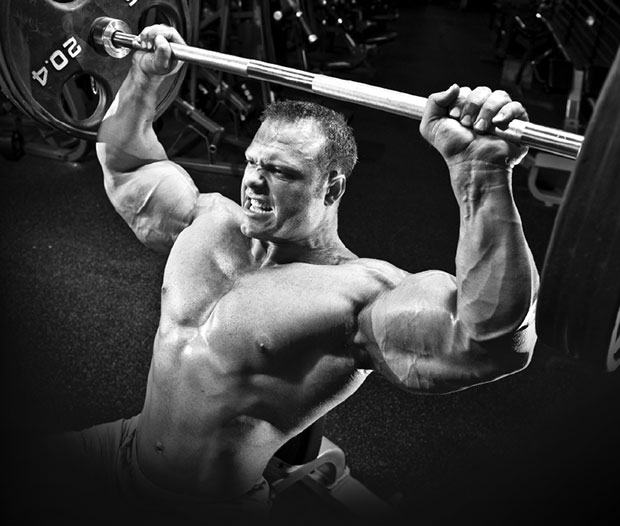
Why is this difficult for the HVT guys? Because they’re doing an arbitrary number of reps, most likely stopping the set well before muscle failure and well before all 1,000 fibres are recruited. Once the HIT guy reaches failure, he’s done. The stimulus response has been initiated, and there’s no need to continue. You’re not going to increase the stimulus response by doing numerous sets to failure. One is all you need. The poor volume guys are out there repping until the cows come home and will probably never reach a point of total fibre recruitment, or maximal stimulus response, because they stop their set well before the stimulus point—failure.
So, how do the volume guys grow? Well, with enough volume, you can recruit more muscle fibres. It’s going to take longer and require more sets, more reps, and more time. It works, it definitely does; many a Mr. Olympia physique was built with HVT. It’s just not as efficient. Lack of efficiency significantly taxes your recovery time. Contrary to popular opinion, muscle isn’t built in the gym. It’s built in bed—or on the couch. Your goal in the gym is to stimulate the growth response, then you go home and grow. According to Mentzer, this where the volume guys shortchange themselves because there are only so many hours in the day. If you spend one of them training, you have 23 to grow. If you spend six hours in the gym, you’re down to 18. Recovery time is always in short supply. The longer you have to recover, the more time your body has to build muscle.
So, it just depends on how efficient you want to be with your bodybuilding. Arbitrary sets and reps will get you there, but not like a specified approach where your output can be measured. As Dorian Yates said, “I don’t know 85 percent or 90 percent; I only know 0 and 100 percent.” And, for a great many of you, therein lies the rub, because going to failure hurts. I don’t mean like, “Ow, it hurts,” I mean like “Holy shit, call an ambulance!”
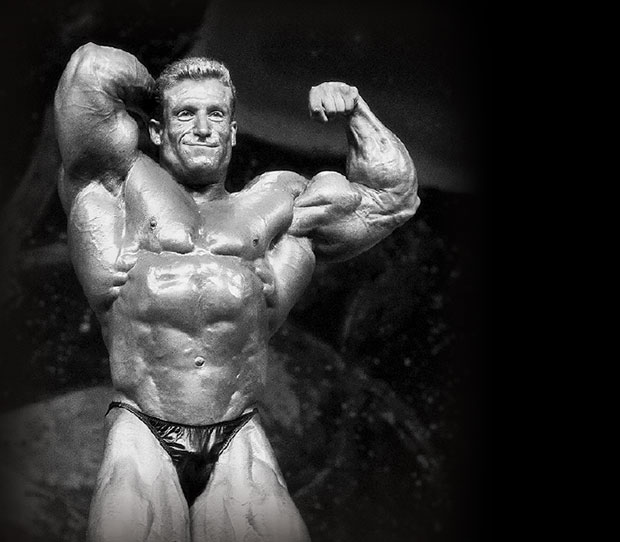
I know one HIT aficionado who claimed that he got the same anxiety before a HIT training session that he got before going to the dentist to get a tooth drilled without novocaine. I know another guy who used to sit in his car outside the gym for 15 to 20 minutes talking himself into going inside and getting started. Me? I’m masochistic. I enjoy the searing pain and forcing my body to keep going when it’s screaming at me to stop. HIT hurts—probably more than anything short of natural childbirth. Mentzer used to say that the best bodybuilder is the one who can concentrate the best—concentrate on driving past the pain barrier and on to true failure. He believed that the power of the mind is what moved the weight—the muscle was just a moldable tool.
Finding Failure
Failing should be easy, right? I mean anyone can fail at anything: Just don’t do your best. In bodybuilding, however, it’s the exact polar opposite; failing is probably one of the hardest things on earth. The reason is because you have to generate intensity that overrides the brain’s pleas to stop hurting yourself. In other words, once again, we’re toying with a survival mechanism. Instinctually, if you’re doing something that causes pain, the impulse is to stop. Finding failure requires you to seek a pain threshold and pass it. Not only pass it, but cause the body to neurologically short-circuit—the brain says “contract” and the body can’t respond, no matter what you do, including someone putting a gun to your head. Which is exactly how Mentzer explained it to me.
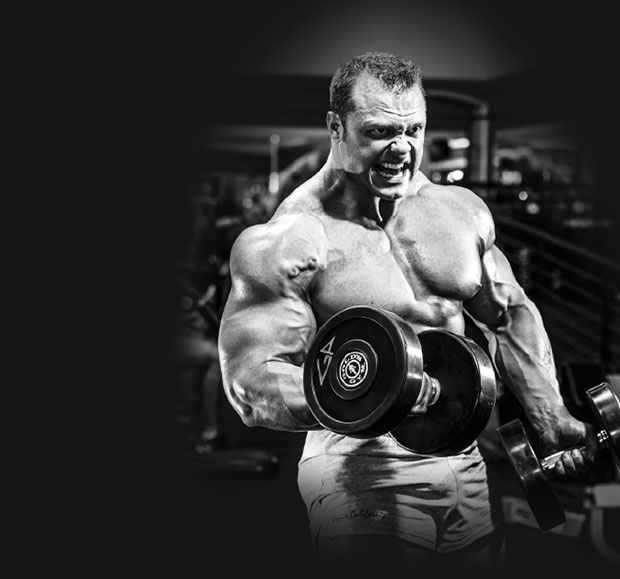
He was putting me through a set of Nautilus biceps curls. After three drops, a few negatives and several forced reps, he got me stuck halfway up on what would be my last rep. As l was yanking on the handles with all I thought I had, he screamed at me to finish the rep. I pulled and grunted and heaved and panted like an old Ford with a leaky head gasket. Nothing—I was hopelessly stuck. Then he leaned in and yelled in my ear, “I have a gun to your head, and I’m going to blow your brains all over the wall behind you if you don’t finish that rep. Obviously, there was no gun. But the imagery involved shook me to my core. I have to finish this rep! But I couldn’t. He kept screaming and I kept pulling, but nothing happened. Then something did.
With the image of my personal grey matter dripping down the wall, my body in the morgue, and my mother crying at my funeral, I was 100 percent all-out driven to finish that rep. But, as I was pulling for God, country, and my mom, guess what happened? The weight went down! I couldn’t control it! No matter how hard I pulled—how hard my brain told my biceps to contract, the weight moved in the opposite direction until it came to stop at the bottom. My brain said “contract,” and my body couldn’t hear it. I was spent, gasping, drenched in sweat. Mike looked at what a mess he had made and smiled approvingly. I had indeed found failure.
The HIT one-set workout:
It’s actually more than one set. What Jones and Mentzer meant was one work set—to failure—for each exercise involved. So, let’s say you were training chest and the exercise was the Hammer incline press. In a typical chest session, you’d be looking at one exercise for flat, one for incline, and one for decline. For inclines, you’d do 2 or 3 sets with a medium weight for 10 to 15 reps to get the pecs and the surrounding assist muscles good and warm. Then you plan the one work set attack. There are many weapons at your disposal to find failure. These are usually forced reps, drop sets, negatives, rest pause—whatever you can muster to drive the muscle to fail. In the Hammer incline’s case, you’d load the machine in such a way that your training partner can strip off weight in good enough increments to affect your continued ability to contract. Once you reach the third drop, you can then employ negatives and forced reps until you drive the pecs to fail.
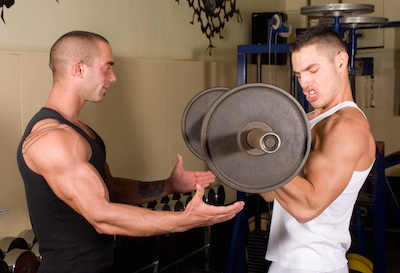
Training Partner
You really need a training partner to do HIT training. It’s an absolute necessity because you’re constantly riding on the edge of failure. This is especially imperative if a heavy weight is positioned over your head or your neck. Beyond the safety aspect of a spotter/training partner, you need to mold each other into knowing where your weaknesses are, how you like to be spotted, what’s too much help, what’s not enough, etc. You get to know each other and hate each other for the grievous pain you inflict. Once you do, the quality of your workouts go up and up. Failure requires help.
For more articles about Mike Mentzer's training principles, including HIT, click here!

